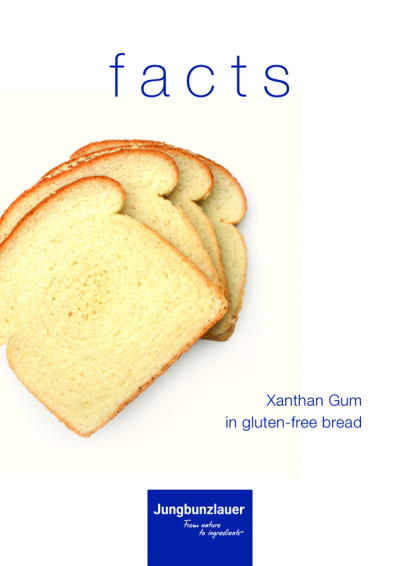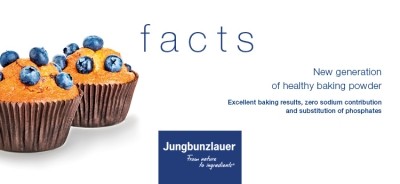Promotional Features
Fortification concepts with calcium and zinc for infant and child products
Minerals are indispensable for the healthy physical and cognitive development of children, with parents increasingly turning to products with a health or nutrition claim.
Calcium in particular, which is needed for normal growth and bone development in children, is a mineral in high demand. The importance of calcium was confirmed by the European Food Safety Authority in 2008 by authorising two corresponding health claims for calcium.1,2
Zinc is known to support the immune system and to have a beneficial physiological effect for infants and young children.3 Even before the COVID-19 pandemic, parents' desire to protect their children's immune system against the common cold has led them to turn increasingly to zinc-enriched products.
The added mineral salts can be communicated to parents via health and nutrition claims. The reference values listed in Table 1 must be respected:
In the EU, nutrient labelling must comply with food information regulation.5 In the USA, nutrition and health claims are possible as outlined in 21 CFR Part 101. The higher bioavailability of organic mineral salts has also been proven in numerous studies.6,7,8
Additionally, the neutral taste of the organic mineral salts and their ability to reduce off-notes, like bitterness, has a positive influence on the flavour of food.9
The fortification of five different baby and children's products was assessed with Jungbunzlauer’s organic minerals tricalcium citrate, zinc citrate and zinc gluconate, and compared with other common minerals in terms of taste, processability and stability. The outcomes are below.
Mineral fortified fruit puree
There are various calcium salts for the fortification of products. In addition to the organic tricalcium citrate, these also include the two inorganic mineral salts calcium carbonate and calcium phosphate.
The impact of these calcium salts was tested in fruit purees in which the additional use of a calcium source leads to a nutritional enhancement of the final product. The influence of the calcium salts on the pH, texture and sensory properties of the purees was investigated.
The results showed that tricalcium citrate had the least influence on pH. In terms of taste, no difference was found with the addition of tricalcium citrate compared to the non-fortified product. However the addition of the inorganic salts calcium carbonate and tricalcium phosphate resulted in taste differences compared to the non-enriched product.
Compared with the inorganic salts, it was found that tricalcium citrate therefore has less overall influence on the product properties. As a result, the use of tricalcium citrate allows higher calcium contents to be achieved overall without any loss of taste.
Mineral fortified fruit bar
Healthy snacks should be within every parent’s reach, and fruit bars are a popular product for children. Jungbunzlauer aims to add the extra benefit of mineral fortification to these products, which can be a good source of vitamins, such as ascorbic acid. A recipe for a mineral-fortified fruit bar was developed and analysed in terms of flavour, mouthfeel and technological properties such as CO2 development and changes in pH during the production process.
The addition of tricalcium citrate, zinc citrate and zinc gluconate in fruit bars were found to provide mineral fortification without compromise in appearance, flavour or texture. Jungbunzlauer was able to demonstrate advantages of using its tricalcium citrate over calcium carbonate – both from a technological and a sensory perspective.
In contrast to calcium carbonate, tricalcium citrate does not lead to formation of CO2 in an acidic environment, has less of an impact on pH and shows better flavour, as well as a more pleasant mouthfeel. It was also found that phosphates could be replaced by citrates without compromise in flavour or texture. The addition of Jungbunzlauer Special Salts achieved a sufficiently high mineral content to claim “source of calcium” and “high in zinc” for the EU market, and “high in calcium” and “high in zinc” for the US market.
‘Source of zinc’ fortified biscuits for children
Better for you snacks, which provide an additional health benefit, are increasingly more popularity worldwide. Mineral fortified biscuits for children, on the other hand, are still an exception, despite offering a smart dual function: children receive a treat, while their parents know that their children’s health is being supported. Zinc, as an essential trace element, is supporting a normal function of the immune system, a key consideration in post-pandemic times. Therefore Jungbunzlauer developed a formulation for children's biscuits with an additional health benefit by including zinc citrate.
Compared with an unfortified version in terms of appearance, taste and texture, it was shown that the addition of zinc citrate does not influence the biscuits in any tested parameter.
Fortified oat drinks for children
Among the great variety of milk alternatives, oat drinks are particularly popular. Oats are a naturally gluten-free cereal which can be grown in many regions of the world, offering a well-balanced amino acid profile and good sustainability. These factors make oats an attractive ingredient for milk alternatives.
Two concept recipes for fortified cocoa oat drinks, developed to target the needs of growing children, were developed. The first, with no added sugar was tailored for the European Market, and the second contained additional protein for the US market.
Jungbunzlauer’s micronised tricalcium citrate grades demonstrated a smooth mouthfeel and pure taste in the final products. It was determined that organic tricalcium citrate can be a viable replacement for inorganic tricalcium phosphate, without affecting any sensory attributes of the product.
Phosphates face significant sustainability challenges, and replacing them is an important consideration for food manufacturers. In a study conducted by Jungbunzlauer, organic mineral salts were evaluated as healthier and more natural, and citrates were even preferred over phosphates when directly compared.10
Immune-boosting syrup
The growing focus in immune health in the children’s supplements category has inspired the development of an immune boosting syrup for children.
Responding to increasing demand for no sugar added products, the syrup uses a combination of erythritol (ERYLITE®) and stevia for a sugar free claim. ERYLITE® is a good alternative to vegetable glycerine and sorbitol in sugar free syrups as it has a high digestive tolerance and allows for a significant reduction in calories.
Additionally, fortification with zinc gluconate and vitamin C allows for an immunity claim that is not permitted with the use of botanicals alone. Another important functional ingredient in this recipe is xanthan gum. It is used to prevent sedimentation of the insoluble particles of the botanicals that act as natural source of vitamin C. The increased viscosity provides a syrupy consistency and improved mouthfeel.
Conclusion
Overall, studies show that fortification with organic salts such as tricalcium citrate, zinc citrate and zinc gluconate offers advantages over their inorganic counterparts, not only in terms of taste but also in processing, without negatively affecting texture or stability. Nutritional claims were possible for all products with the amounts used; for the calcium fortified products, health claims can be made in relation to normal growth and bone development.
References
1. EFSA Panel on Dietetic Products, Nutrition and Allergies. Scientific substantiation of a health claim related to calcium and bone growth pursuant to Article 14 of Regulation (EC) No 1924/2006. EFSA Journal 2008;826:1–11. DOI: https://doi.org/10.2903/j.efsa.2008.826
2. EFSA Panel on Dietetic Products, Nutrition and Allergies. Scientific substantiation of a health claim related to calcium and vitamin D and bone strength pursuant to Article 14 of Regulation (EC) No 1924/2006. EFSA Journal 2008;828:1–13. DOI: https://doi.org/10.2903/j.efsa.2008.828.
3. EFSA Panel on Dietetic Products, Nutrition and Allergies (NDA). Scientific Opinion on the substantiation of a health claim related to zinc and normal function of the immune system pursuant to Article 14 of Regulation (EC) No 1924/2006. EFSA Journal 2014;12(5):3653. DOI: https://doi.org/10.2903/j.efsa.2014.3653.
4. Commission directive 2006/125/EC on processed cereal-based foods and baby foods for infants and young children
5. Commission Regulation (EU) No 1169/2011 on the provision of food information to consumers.
6. De Vrese M and Gerstner G. Tricalcium citrate (TCC) and health. J Nutr Health Food Eng 2017;6(5):130–146. DOI: 10.15406/jnhfe.2017.06.00214.
7. Sakhaee K, Bhuket T, Adams-Huet B, Rao DS. Meta-analysis of calcium bioavailability: a comparison of calcium citrate with calcium carbonate. Am. J. Therapeutics 1999;6:313–321. DOI: 10.1097/00045391-199911000-00005.
8. Wegmüller R, Tay F, Zeder C, Brnic M, Hurrell RF. Zinc absorption by young adults from supplemental zinc citrate is comparable with that from zinc gluconate and higher than from zinc oxide. J Nutr. 2014;144(2):132–136. DOI: 10.3945/jn.113.181487.
9. Besler L and Gerstner G. Formulating better tasting infant formula. Jungbunzlauer Fact Sheet (2015).
10. Dietrich V. What we didn’t know about minerals – a consumer study about mineral perception. Jungbunzlauer Fact Sheet (2022).






